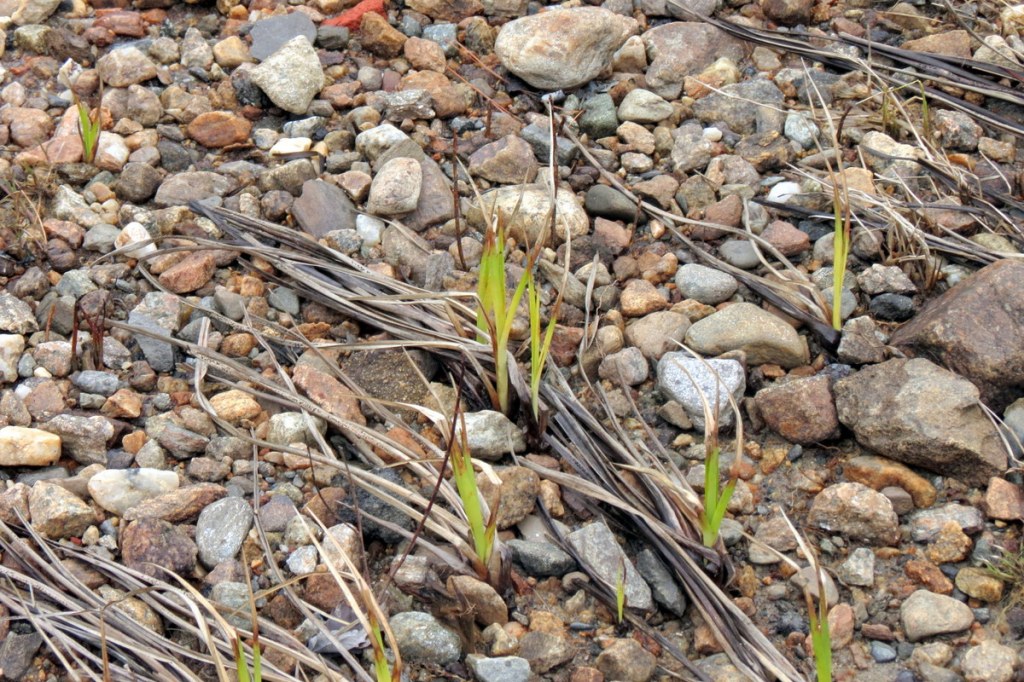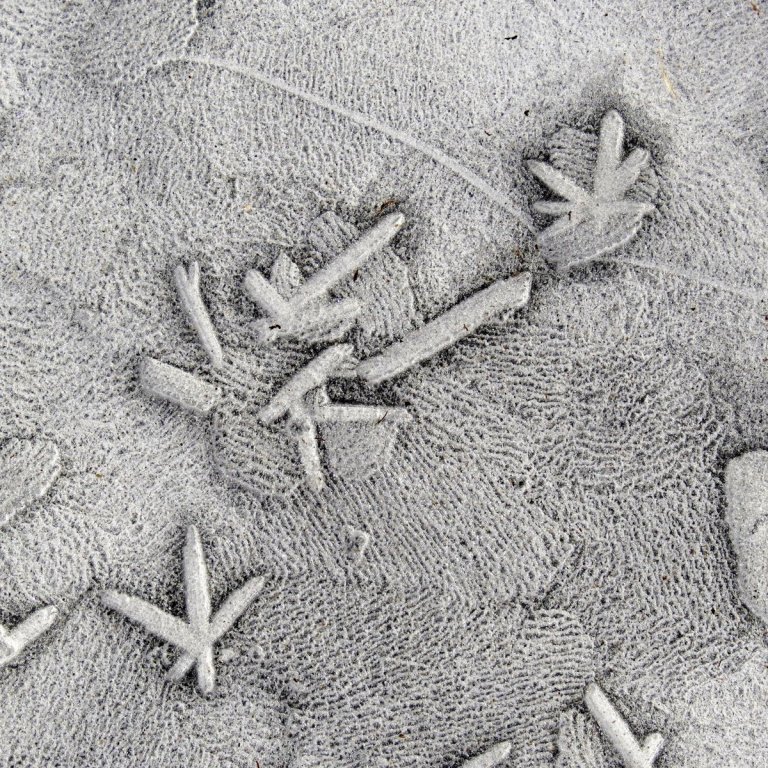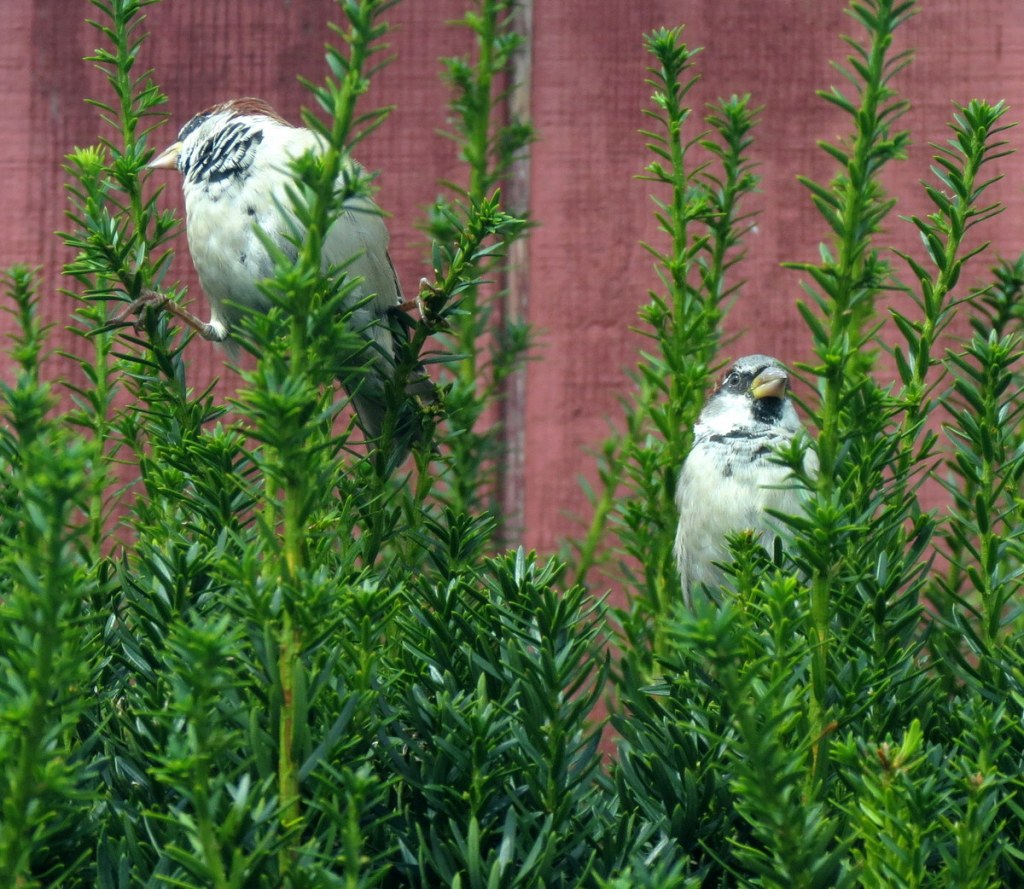
I find the most satisfying times I spend in nature are when I go with no expectations. When I just go and see what I can see without any preconceived notions, I get the most out of it. So with that thought in mind I went to the Ashuelot River in Swanzey on one recent showery day. It was a good choice because I knew if it rained, I could get back to the car without getting too wet. The way the clouds looked I doubted that I would be there long.

The river was tame and had nothing much to say. Surprising, since the last time I came here to get photos of waves, it roared. It was out of its banks here for part of the winter and flooded parts of the area that I’d be visiting, so there was no telling what I’d see on this day.

The first thing I saw was a beautiful mussel shell tangled in the weeds. All the colors of a rainbow were in it and as I see it in the photo, I wish I had brought it home. There are lots of mussels in this section of river and the raccoons come down to the shore at night to enjoy them.

There was another shell, but what I was really taking this photo of were the interesting patterns in the sand. I’d guess that the lighter sand was drier than the darker but why it wasn’t all drying at the same rate was a mystery. What was not a mystery is why the sand was here. The river seems to flood more area each year in this spot and the silt gets deposited higher on its banks.

The water had just receded from this spot and here already were green spring shoots.

The wind had blown all the stuffing out of a bird’s nest. It was some type of fabric and I wondered where the bird had found it all.

The mosses were in many shades of green.

And the oak leaves were in many shades of brown. They were beautiful, as if they had been sculpted. I thought, if I could make a mold by carving an oak leaf into a block of wood, and then get a thin sheet of copper and hammer it into the mold, I would have a copper oak leaf. Then if I curled it and painted it just so, I could have a fair representation of what I see here, and I could see it every day. But then I thought, maybe what makes things like this so special is that we can’t see them every day. We just happen to run into them now and then and that’s why we stop and see, and admire and learn.

This was a bit unnerving. Silt on the trail meant that the river came up over the land here; the first time I’ve seen it happen. This bit of land is a small peninsula that juts out into the river and points like a finger downriver.

There is a huge old maple tree here that first lost one trunk and now it has lost the other. Woodpecker holes and lots of fungi tell the story.

I saw quite a few maple dust lichens growing on a muscle wood tree (Carpinus caroliniana.) Muscle wood is also called American hornbeam, and its wood is very dense and hard. It loves to grow by rivers and streams but it is short lived. I rarely see trees that are much bigger around than my leg, in fact. This one was just about that size but was leaning badly and will probably fall soon. You can see how its “tendons” ripple beneath its “skin” to give it its common name. It is also called blue beech and I think this is the first time I’ve ever seen maple dust lichens (Lecanora thysanophora) growing on one.

The rough looking seedpods of witch hazel are everywhere out here. Something I’ve always wanted to see (or hear) is witch hazel seed pods exploding. They explode with force and can throw the seeds as far as 30 feet. I’ve read that you can hear them pop when they open and even though I keep trying to be there at the right time to see and hear it happening, I never have been.

A burl on a tree reminded me of all the beautiful things that can made from them. Anything made from a burl will be beautiful but also quite pricey. I’ve seen huge antique burl bowls that were just amazing but they were also valued in the thousands of dollars. Scientists don’t fully understand why it happens but burls are thought to grow on trees that have been weakened by stress or damage. Once the tree’s defenses have been weakened insects and/or fungi can attack and cause the abnormal growth. I don’t know how that could follow with this young maple though. I suppose it might have been stressed but I didn’t see any damage.

Slowly, the river is cutting off the tip of the finger. From here on I’ve seen this entire tip of the peninsula under water a few times but there was a time not so long ago when I could walk right through here all the way to the point. Over across the water where all the silt is now thousands of violets used to bloom, and it was a shaded, beautiful spot where people liked to fish. Now as the river slowly erodes it away, it looks more waste land than the idyllic spot it once was.

Here is a view of the end of the peninsula completely under water after heavy rain in 2019. Each time this happens more of it goes.

The beavers had been busy, as they always are. They keep wounding this tree but have never cut it down. You can see this same tree to the far left in the previous photo. The beavers had chewed on it then, too.

There were either blue flag iris or cattails growing in the mud. Since I didn’t see any of what looked like last year’s cattail stems, I’m going to assume they’re irises.

A branch split away from this tree and revealed that it was completely hollow. It is just a shell with nothing inside so it won’t take much of a wind to blow it down. It’s amazing how many standing trees are completely hollow.

A large fugus lay on the ground by the hollow tree but I couldn’t see anywhere on the tree that it might have come from, so that was another mystery for this day.

The river had carved the sand in strange ways here. I don’t know if I’ve ever seen anything like that.

This walk I thought, was like walking through an art gallery. The muscle shell, the patterns in this stone, and the way the river carved the sand were all beautiful, and I was grateful to have seen them. I can see a day in the not-too-distant future though, when the river will probably swallow all of it.
Happiness, not in another place but this place…not for another hour, but this hour. ~Walt Whitman
Thanks for coming by. Have a happy Easter!








































































































































































































